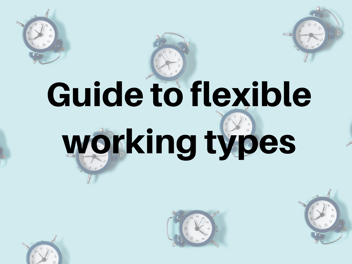Is the Four-Day Week for Everyone?
There’s been plenty of buzz around the four-day week, especially following successful trials in the UK and lobbying efforts to make it a standard practice. The idea of working fewer days for the same pay is undeniably appealing, but is it really the best solution for every business? Or is it just one of many ways to embrace the exciting future of flexible working?
What Is a Four-Day Week?
The term ‘four-day week’ is used in different ways, and it’s important to distinguish between them:
- Compressed Hours: Employees work the same total weekly hours, but across four longer days instead of five. This means a 35- or 40-hour week squeezed into fewer days.
- Reduced Hours, Same Pay: Employees work fewer hours overall but still receive full pay—essentially a pay rise for working less.
- Traditional Part-Time: Employees work four days instead of five, but their salary is pro-rated accordingly.
- Other Flexible Models: Some companies offer variations, such as four-day weeks in alternating cycles or seasonal flexibility.
The Pros and Cons of a Four-Day Week
There’s no doubt that flexible working is a huge win for both employers and employees. Research consistently shows that employees value flexibility, and a four-day week can offer a range of benefits, such as:
- Improved work-life balance and wellbeing
- Increased employee satisfaction and engagement
- Higher productivity in some industries
- Potential for reduced commuting costs and environmental impact
- A competitive edge in attracting and retaining top talent
However, there are challenges too:
- Compressed hours can lead to employee burnout, as longer working days may not suit everyone.
- Reduced hours, same pay is an expensive model for businesses, and there’s a risk that initial productivity gains level off over time.
- Operational challenges arise when managing client expectations, customer service coverage, and team schedules.
- Industry suitability varies—while office-based roles may transition smoothly, sectors like healthcare, retail, or manufacturing may find it harder to implement.
There’s More Than One Way to Work Flexibly
At Ten2Two, we know that flexibility is the future of work. While a four-day week is one approach, it’s just one of many ways businesses can benefit from offering flexible working. The key is to find a model that works for both the business and its people. Here are some other winning formats:
- Shorter daily hours: For parents of young children, a five-day week with shorter hours may be more practical than a condensed four-day model.
- Fractional working: Senior professionals seeking portfolio careers may prefer splitting time between multiple businesses rather than committing to a set four-day schedule.
- Part-time hours: A fantastic way to save on costs while attracting highly skilled professionals who need flexibility.
- Remote working: Reduces office costs and offers professionals more control over their time, particularly those with long commutes.
- Hybrid and part-time: A mix of remote and in-office work on reduced hours can provide the best of both worlds.
Conclusion
The workplace is evolving, and flexible working isn’t just a trend—it’s here to stay. While the four-day week is an exciting option, it’s not the only way to create a thriving, productive workforce. The best approach is to keep an open mind and explore different working patterns that benefit both employees and businesses.
By embracing flexibility in all its forms, companies can attract outstanding talent, boost productivity, and create happier, more engaged teams. The future of work is about choice—tailoring schedules to business needs while ensuring employees have the balance they deserve. And that’s something worth celebrating!


 Back to resources
Back to resources 3 min read
3 min read








